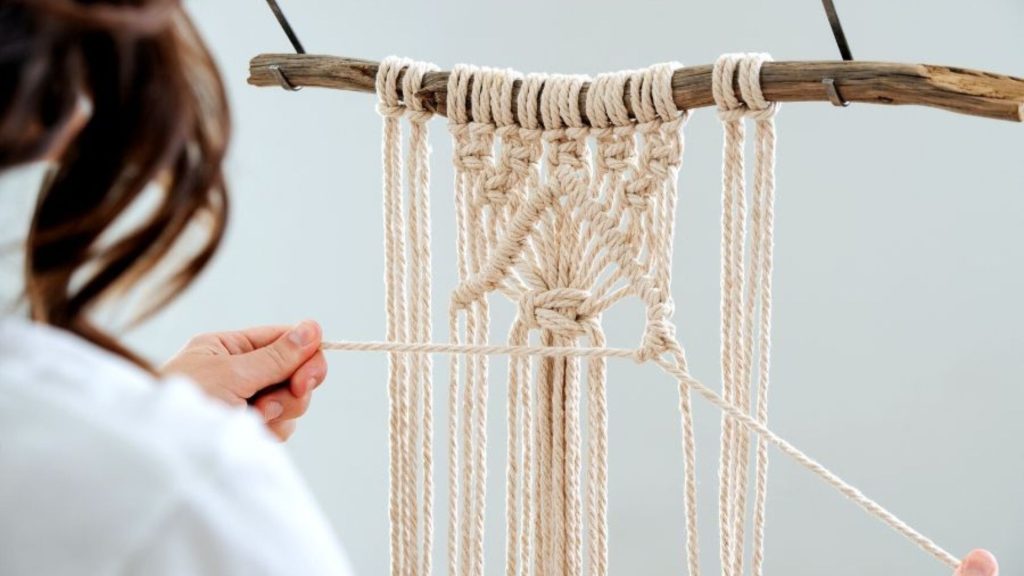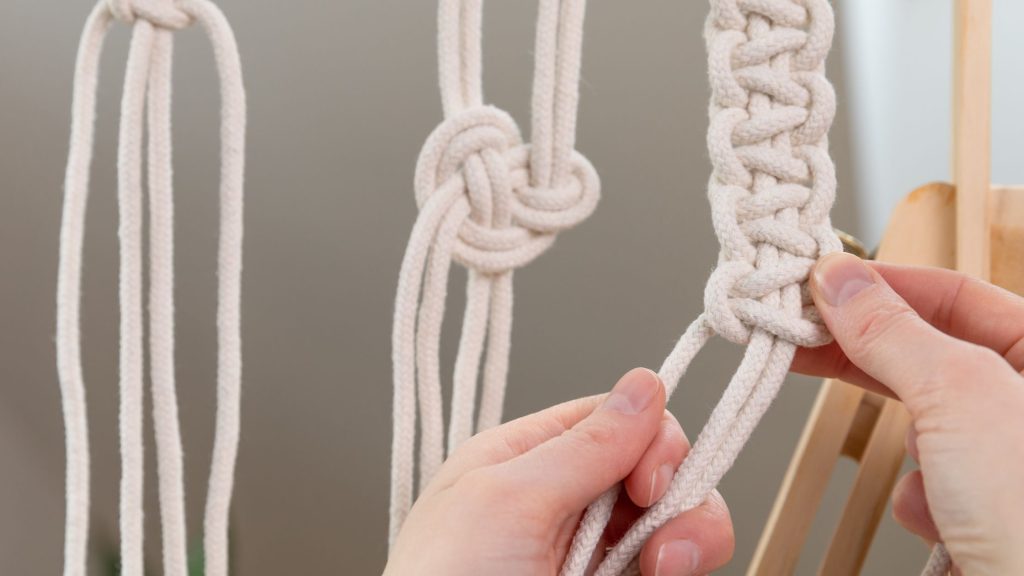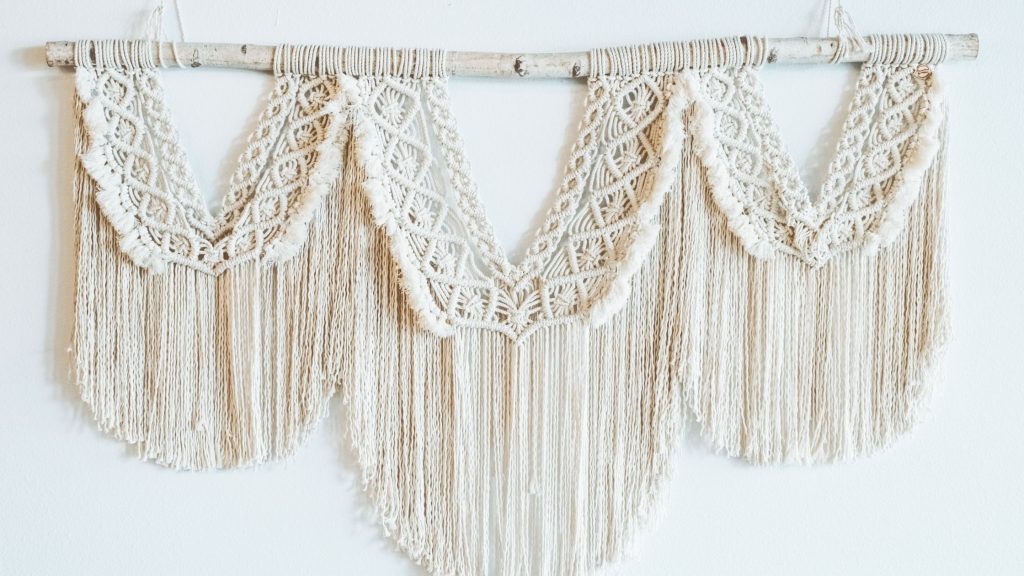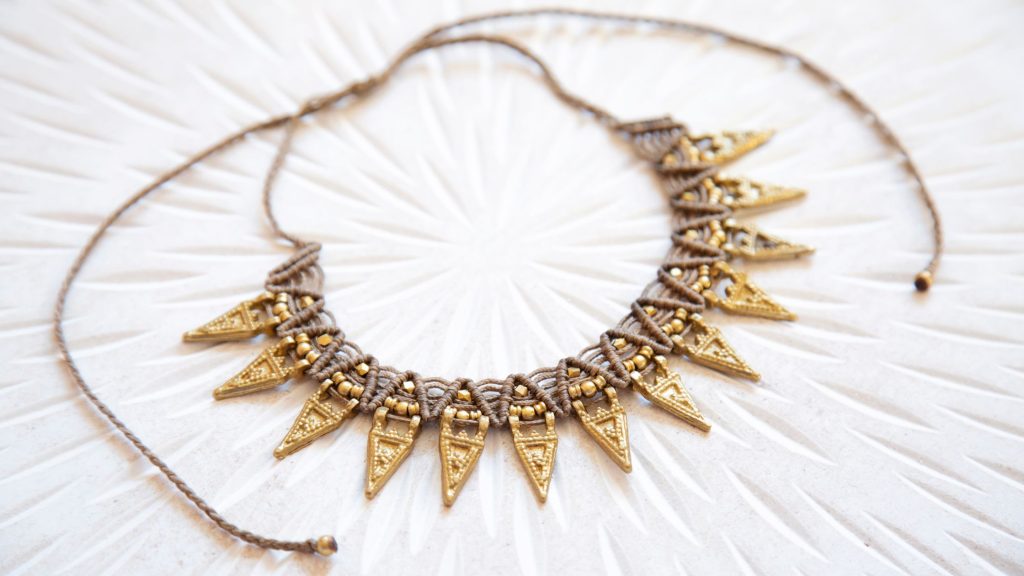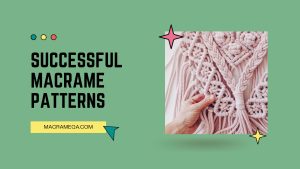Macrame, the ancient art of knotting cords together to create beautiful patterns, has experienced a resurgence in popularity in recent years. But if you’re looking to take your macrame skills to the next level and create intricate and complex designs, you may be wondering where to start. In this article, we will explore the techniques and tips that will help you create advanced macrame patterns with stunning complexity. Whether you’re a beginner eager to expand your skills or an experienced macrame artist looking for new challenges, this guide will provide the knowledge and inspiration you need to create intricate masterpieces. So grab your cords and get ready to unlock the world of advanced macrame!
Choosing the Right Materials
When it comes to macrame, choosing the right materials is essential. One of the first things to consider is the selection of high-quality cords. Look for cords that are durable and have a smooth texture, as these qualities will make it easier to work with them and create intricate designs. Opt for cords made from natural materials such as cotton, linen, or hemp, as they provide a beautiful aesthetic and are environmentally friendly.
Exploring different cord types is also important in achieving the desired look for your macrame piece. There are various cord options available, each with its own unique characteristics. For example, cotton cords are soft and pliable, perfect for creating delicate and intricate designs. On the other hand, linen cords offer a more structured and textured look. Experimenting with different cord types will allow you to explore different styles and create macrame pieces that match your personal taste.
Another consideration when choosing materials for your macrame project is the color of the cords. The color choice can greatly impact the overall look and feel of your macrame piece. For a minimalist and modern look, you might opt for neutral tones such as white, beige, or gray. If you prefer a more vibrant and bohemian style, consider using cords in bold and vibrant colors like red, turquoise, or mustard yellow. The color options are endless, so don’t be afraid to get creative and choose colors that reflect your personal style and the ambiance you want to create.
Learning Basic Macrame Techniques
Before diving into advanced macrame patterns, it is crucial to understand and master the basic macrame techniques. One of the fundamental aspects of macrame is the ability to tie various knots. These knots form the basis of many macrame patterns. Some of the basic knots you should learn include the square knot, the half hitch knot, and the lark’s head knot. Practice these knots individually and in combinations to get comfortable with their execution and understand how they interact with each other.
In addition to knot tying, mastering the use of tension is vital for creating well-balanced macrame pieces. Maintaining consistent tension throughout your work ensures that your knots are even and your piece hangs properly. Experiment with different tension levels by pulling the cords tighter or looser to see the impact it has on the overall appearance of your macrame piece.
To further enhance your proficiency in macrame, practice various knot combinations. By combining knots, you can create intricate patterns and textures. For example, combining square knots with half hitch knots can produce a beautiful spiral pattern. Don’t be afraid to experiment and explore different knot combinations, as this will develop your skills and enable you to create more complex designs.
Exploring Advanced Knots
Once you have mastered the basic macrame techniques, it’s time to explore advanced knots to take your macrame skills to the next level. One advanced knot to learn is the double half hitch. This knot involves wrapping the working cord around the stationary cord multiple times, creating a more intricate texture. Mastering the double half hitch will allow you to add depth and complexity to your macrame patterns.
Building on the double half hitch, you can further expand your skills by mastering the vertical double half hitch. This knot is similar to the double half hitch but is executed vertically, creating a unique look. By combining the vertical double half hitch with other knots or incorporating it into larger patterns, you can create stunning macrame designs with intricate details.
Exploring square knot variations is another way to add interest and complexity to your macrame projects. The basic square knot involves crossing the left cord over the right and then passing the right cord over the left. By altering the sequence or incorporating additional cords, you can create different patterns and textures. Experiment with square knot variations to discover new ways to elevate your macrame designs.
Using Beads and Gems
Adding beads and gems to your macrame pieces can elevate their visual appeal and add a touch of elegance. When selecting beads, consider both their size and type. The size of the beads should complement the scale of your macrame design. For larger macrame pieces, opt for bigger beads to create a statement look, while smaller beads work well for more delicate designs. In terms of type, choose beads that match the overall aesthetic you’re trying to achieve. For a natural and earthy feel, wooden beads are a great option, whereas glass beads can add a touch of sophistication and sparkle.
Once you have chosen your beads, it’s time to string them onto the cords. You can incorporate beads in multiple ways, such as threading them onto individual cords or weaving them into specific sections of your macrame pattern. Experiment with different bead placement and spacing to achieve the desired effect. Be mindful of maintaining the balance and distribution of beads throughout your macrame piece to create a cohesive look.
Incorporating gemstones and crystals into your macrame designs adds a touch of nature’s beauty and creates a unique aesthetic. Gemstones and crystals come in various shapes, sizes, and colors, allowing you to tailor your macrame piece to reflect your personal style. Whether you choose to use a single focal gemstone or scatter smaller crystals throughout your design, these natural elements will enhance the overall visual impact of your macrame artwork.
Layering and Dimension
Creating layers is an excellent way to add depth and visual interest to your macrame designs. By using alternating cords, you can weave intricate patterns that give the illusion of layers. Experiment with different cord thicknesses to achieve varying levels of dimension in your macrame pieces. Thicker cords can be used as a base while thinner cords are layered on top to create a textured and multidimensional appearance.
Adding fringes is another method of introducing dimension to your macrame work. Fringes can be created by leaving longer strands of cords at the bottom of your piece and trimming them to the desired length. You can also knot or braid the ends of the cords to create unique and eye-catching fringes. These fringes can be incorporated at the bottom or dispersed throughout your macrame piece, depending on the desired effect.
Incorporating different textures is yet another way to enhance the dimension of your macrame designs. Experiment with using cords of varying materials, such as combining cotton cords with jute or metallic cords. This contrast in textures adds visual interest and depth to your macrame pieces. Additionally, consider incorporating other materials like ribbons or yarn to further diversify the textures within your macrame artwork.
Intricate Macrame Patterns
For those seeking a challenge and wanting to push their macrame skills further, creating complex geometric designs is a great option. These intricate patterns often involve multiple cords and intricate knot combinations. Exploring geometric designs allows you to create visually stunning macrame pieces that captivate attention. Some popular geometric patterns include chevron designs, diamond patterns, and intricate angular compositions. Dedicate time and patience to practice these patterns to achieve clean, precise lines and angles.
While geometric designs are commonly associated with macrame, don’t be afraid to experiment with unique shapes as well. Nature-inspired forms, such as leaves or flowers, can add a whimsical touch to your macrame artwork. Play around with curvilinear shapes or try incorporating different knot techniques to achieve your desired shape. The beauty of macrame lies in the artistic freedom, so let your imagination soar and create unique designs that reflect your personal style and creativity.
Working with multiple cords simultaneously can also lead to intricate and visually captivating macrame patterns. The complexity and variety of your designs increase with the number of cords you use. Experimentation is key when working with multiple cords, as you can create braided patterns, intertwining textures, or even incorporate beads or gems among the cords. Embrace the challenge of working with multiple cords and enjoy the stunning results that can be achieved through this technique.
Macrame Wall Hangings
Macrame wall hangings have become increasingly popular in home decor, and designing large-scale wall hangings can be a rewarding project. When creating a macrame wall hanging, consider the size and scale of the piece in relation to the wall space where it will be displayed. Larger wall hangings can serve as striking focal points in a room, while smaller ones can add a touch of bohemian charm.
Incorporating natural elements like driftwood into your wall hangings can add a rustic and organic feel. Secure the driftwood piece at the top of the macrame artwork and let the cords flow down beneath it. Driftwood provides a unique frame for your macrame piece and adds a natural touch that complements the overall aesthetic.
Adding decorative elements like feathers to your macrame wall hangings can also enhance their visual appeal. Attach feathers at different points along the cords or gather them together to create a cascading effect. Feathers bring a delicate elegance to the macrame piece and create movement, which adds an ethereal quality to the overall design.
Macrame Plant Hangers
Macrame plant hangers offer a stylish and creative way to showcase your indoor plants. Creating your own macrame plant hanger allows you to customize the size, length, and knot patterns to suit your plant’s needs. Start by choosing a plant with a pot that fits the desired size of your plant hanger.
Consider playing with different lengths and knot patterns to create varying looks. Longer plant hangers can add drama and draw attention to your plants, while shorter hangers create a more subtle and minimalist look. Experiment with different knot patterns such as square knots, spiral knots, or even unique designs like the diagonal clove hitch. The versatility of macrame allows you to tailor each plant hanger to match your plant’s personality and the overall style of your space.
Using macrame to showcase beautiful plants is not only visually appealing but also a practical way to display and care for your plants. Macrame plant hangers provide adequate airflow and allow your plants to receive sunlight from different angles, promoting healthy growth. They also free up valuable surface space, giving you the opportunity to bring greenery into any room without sacrificing space.
Macrame Jewelry
If you’re looking for a creative outlet and a way to carry macrame wherever you go, making your own macrame jewelry is the perfect choice. Intricate macrame bracelets can be fashioned using various knot patterns and incorporating beads or gemstones. Experiment with different knot combinations to create eye-catching designs that reflect your personal style.
Designing statement macrame necklaces offers an opportunity to showcase your macrame skills on a larger scale. Opt for thicker cords to create a more substantial piece, and experiment with different colors and beads to add visual interest. The length and shape of the necklace can vary depending on your personal preference and the style you wish to achieve.
Creating unique earrings using macrame adds a touch of bohemian flair to your accessories collection. Macrame earrings can be crafted using various knot patterns, and you can incorporate beads or gemstones to add a pop of color and sparkle. Experiment with different lengths and designs to find the perfect pair of macrame earrings that fit your style.
Troubleshooting and Problem-Solving
Even the most experienced individuals encounter issues and mistakes while working on macrame projects. It’s important to familiarize yourself with troubleshooting techniques to tackle common macrame problems. If you make a mistake in your macrame work, don’t panic. Often, mistakes can be easily fixed by carefully unraveling the knots and retying them correctly. Take your time, and remember that practice makes perfect.
Another common issue in macrame is dealing with tangled cords. While it can be frustrating, untangling cords is a normal part of the process. Patience and a methodical approach are key when untangling cords. One helpful tip is to lay the cords flat on a table or the floor and gently work through the tangles, starting from one end and moving systematically through the length of the cords.
In the world of macrame, it’s natural to encounter other common issues such as cords that are too short, inconsistent tension, or patterns that don’t turn out as expected. Problem-solving in macrame involves finding creative solutions to adapt and modify your project to overcome these challenges. Sometimes, adding extensions to the cords, adjusting tension as you work, or simply modifying the pattern slightly can help resolve these issues. Trust your intuition and don’t be afraid to make adjustments along the way. With practice, you’ll become more adept at troubleshooting and overcoming any macrame-related obstacles that come your way.
Conclusion
In conclusion, macrame is a versatile craft that offers endless possibilities for creativity and self-expression. By choosing high-quality cords, mastering basic techniques, exploring advanced knots, incorporating beads and gems, creating layers and dimension, experimenting with intricate patterns, designing wall hangings and plant hangers, making jewelry, and understanding troubleshooting techniques, you can embark on a beautiful macrame journey. Whether you’re creating macrame for yourself, as gifts, or even for sale, enjoy the process, embrace the learning curve, and let your imagination run wild as you bring your macrame visions to life. Happy knotting!




